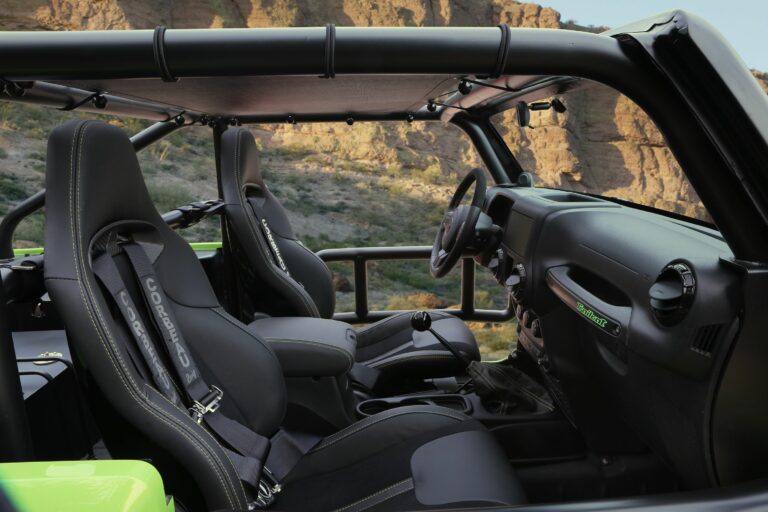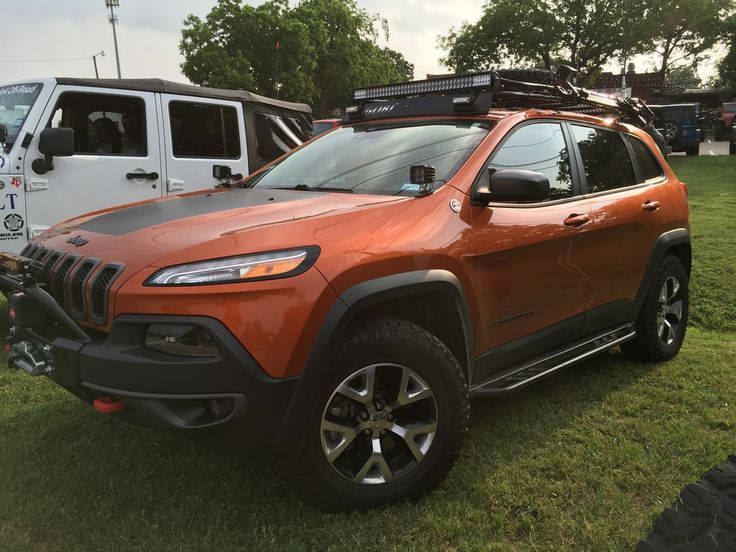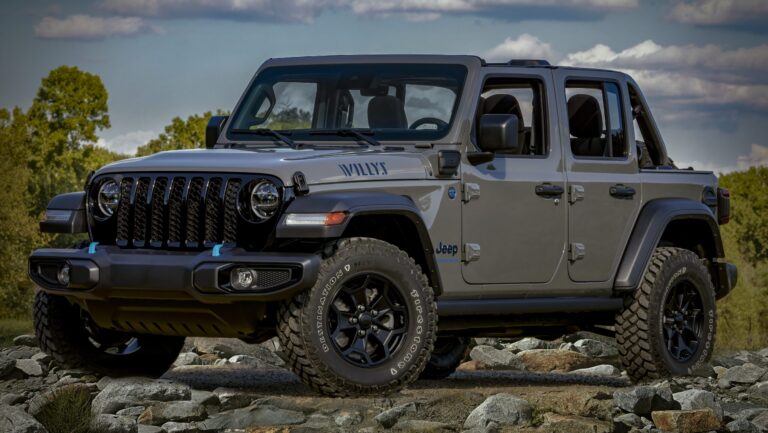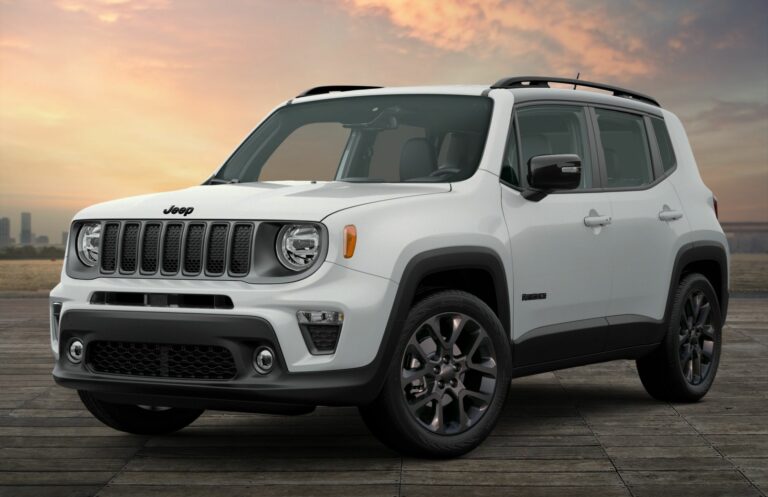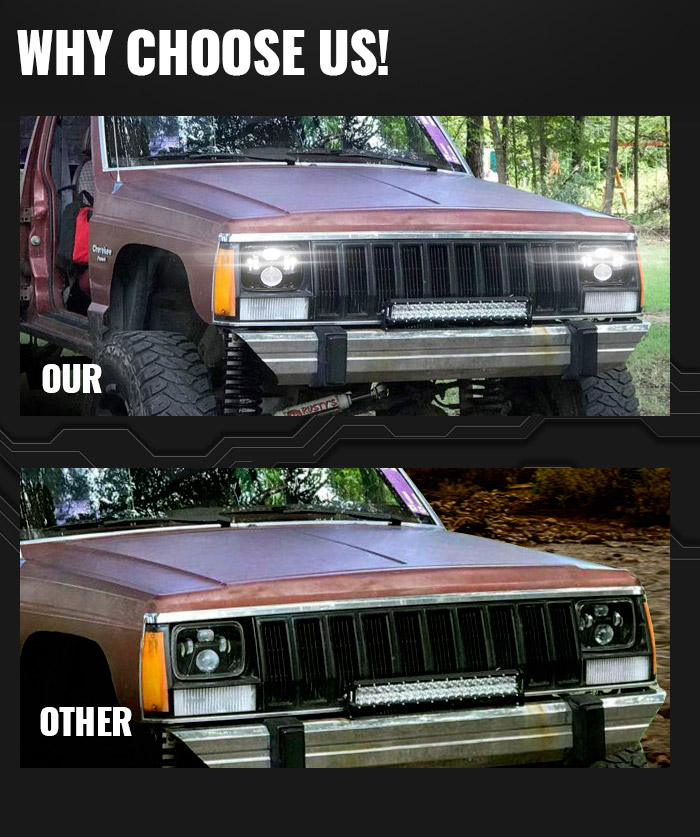Jeep Cherokee Used: Your Comprehensive Guide to Buying a Pre-Owned Icon
Jeep Cherokee Used: Your Comprehensive Guide to Buying a Pre-Owned Icon jeeps.truckstrend.com
The Jeep Cherokee. For decades, this nameplate has evoked images of rugged capability, adventurous spirit, and practical utility. From its humble beginnings as a groundbreaking SUV to its modern incarnation as a versatile crossover, the Cherokee has left an indelible mark on the automotive landscape. While a brand-new Cherokee offers the latest features and peace of mind, the used market presents an incredibly compelling proposition for those seeking a blend of legendary performance and significant value.
A "used Jeep Cherokee" refers to any pre-owned model of this iconic vehicle, ranging from the highly coveted classic XJ generation to the contemporary KL series. Opting for a used Cherokee allows buyers to tap into its renowned off-road prowess, comfortable family-hauling capabilities, and distinctive styling without the steep depreciation hit of a new car. This comprehensive guide will navigate the intricacies of purchasing a used Jeep Cherokee, providing you with the knowledge and tools to make an informed decision and find the perfect adventure companion.
Jeep Cherokee Used: Your Comprehensive Guide to Buying a Pre-Owned Icon
The Enduring Appeal of a Used Jeep Cherokee
Choosing a used Jeep Cherokee isn’t just about saving money; it’s about smart value and accessing a vehicle known for its unique blend of attributes. Depreciation, the most significant cost for new car owners, largely occurs in the first few years. By buying used, you let the first owner absorb that initial loss, allowing you to acquire a well-equipped vehicle at a fraction of its original price.
What truly makes the Cherokee appealing in the used market?
- Legendary Capability: From the robust 4×4 systems (like Active Drive I, Active Drive II, and the Trailhawk’s Active Drive Lock) to impressive ground clearance, many Cherokees are engineered to tackle more than just paved roads.
- Versatility: Whether you need a daily commuter, a family hauler with ample cargo space, or a weekend warrior for light trails, the Cherokee offers a spectrum of utility.
- Distinctive Style: Each generation carries a unique aesthetic, from the boxy, utilitarian charm of the XJ to the modern, somewhat polarizing design of the KL, ensuring there’s a look for every taste.
- Broad Availability: Given its long production run and popularity, the used market is rich with various model years, trims, and engine configurations.
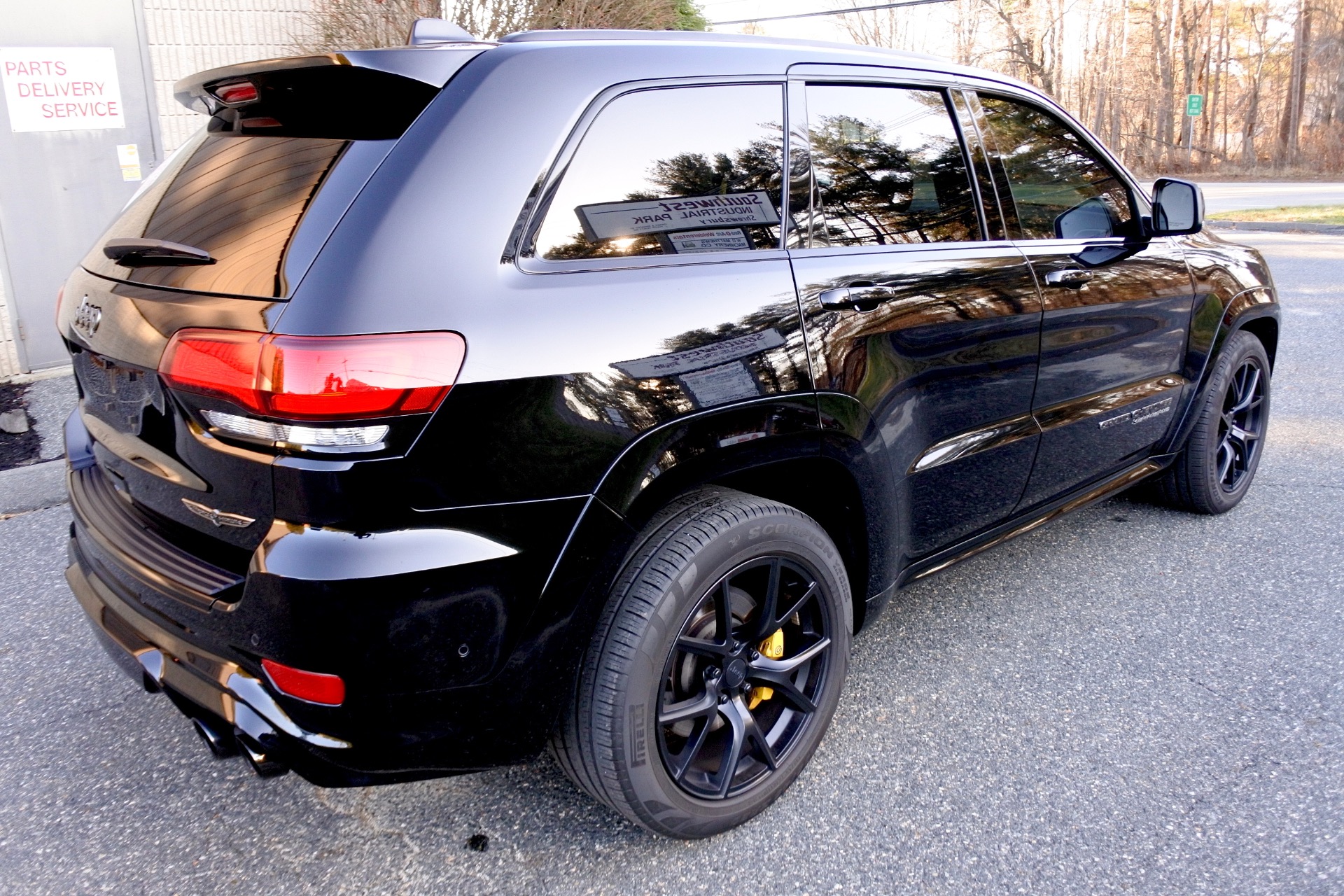
Key Generations and What to Look For
The Jeep Cherokee nameplate spans multiple distinct generations, each with its own character, strengths, and potential quirks. Understanding these differences is crucial for a successful used purchase.
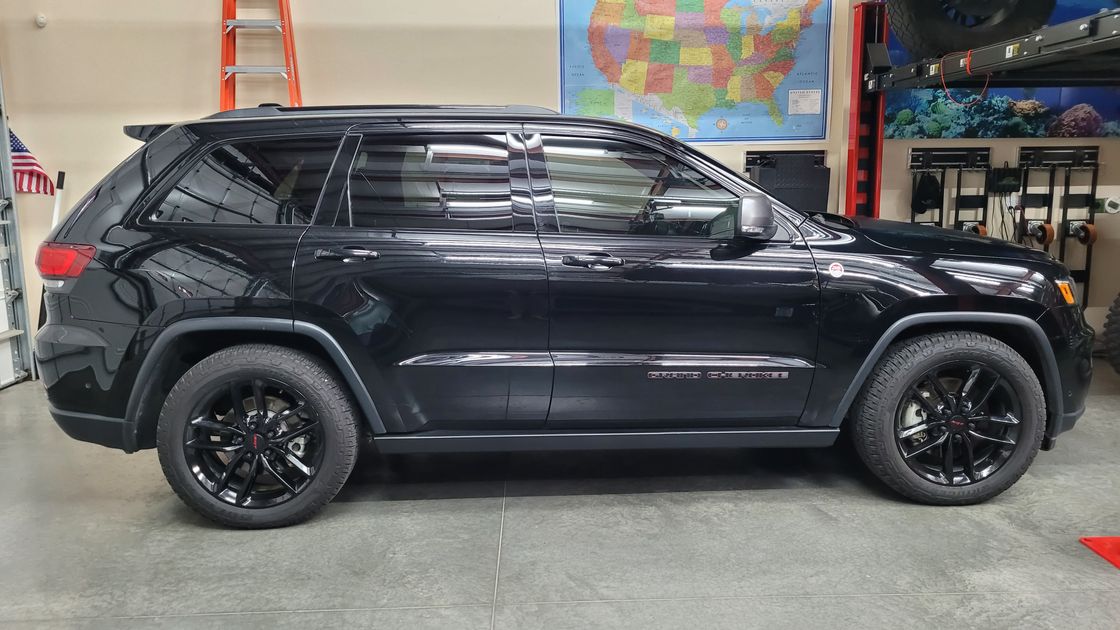
1. XJ (1984-2001): The Unkillable Legend
- Characteristics: The original, iconic unibody SUV. Known for its boxy, timeless design, incredible durability, and legendary off-road capability, especially when equipped with the 4.0L inline-six engine.
- What to Look For:
- Rust: Common on the unibody frame rails, floorboards, and rocker panels.
- 4.0L Engine Issues: Prone to cracked cylinder heads (especially 0331 castings in later models), though generally a very robust engine if maintained. Look for coolant leaks or milky oil.
- Electrical Gremlins: Older wiring can lead to intermittent issues.
- Suspension Wear: Bushings, leaf springs, and shocks will likely be worn.

2. KJ (2002-2007) & KK (2008-2012) – The Liberty Era
- Characteristics: Rebadged as the "Jeep Liberty" in North America. The KJ introduced independent front suspension for improved on-road comfort. The KK was a larger, more refined evolution with improved safety features. Both offered V6 engines.
- What to Look For (KJ & KK):
- Ball Joints: A common wear item, especially on the KJ.
- Rust: Still a concern, particularly in northern climates.
- Transmission Issues: Some reports of automatic transmission problems, particularly with higher mileage.
- Fuel Economy: V6 engines can be thirsty.
3. KL (2014-Present): The Modern Interpretation
- Characteristics: A complete departure, built on a car-based platform (shared with the Chrysler 200/Dodge Dart). Offers more refined on-road manners, modern tech, and varied powertrains (2.4L "Tigershark" I4, 3.2L Pentastar V6, 2.0L Turbo I4). Trailhawk trim retains impressive off-road capabilities.
- What to Look For:
- ZF 9-Speed Automatic Transmission: Early models (2014-2015) had software issues leading to rough shifts or hesitation. Most have received updates, but thoroughly test drive.
- Uconnect Infotainment: Check for responsiveness, connectivity issues, and updated software.
- 2.4L Engine Performance: Can feel underpowered, especially with a full load. Test drive to ensure it meets your expectations.
- Water Leaks: Some reports of sunroof or tailgate seal leaks.
- 4×4 System Health: Ensure all 4×4 modes engage smoothly (if applicable).
The Buying Process: A Step-by-Step Guide
Purchasing a used Jeep Cherokee requires diligence. Follow these steps to maximize your chances of a successful and satisfying purchase:
-
Define Your Needs and Budget:
- Purpose: Off-roading, daily commute, family trips? This dictates the generation, trim (e.g., Trailhawk for serious off-roading), and engine.
- Budget: Beyond the purchase price, factor in insurance, potential repairs, fuel costs, and routine maintenance. Used cars often require immediate attention to wear items.
-
Research Specific Models and Trims:
- Once you’ve narrowed down a generation, research common issues for specific model years and engine/transmission combinations. Owner forums are invaluable resources.
-
Find Potential Vehicles:
- Online Marketplaces: Autotrader, Cars.com, CarGurus, Facebook Marketplace, Craigslist.
- Dealerships: Offer certified pre-owned (CPO) options (for newer models) with warranties, but typically at a higher price.
- Private Sellers: Often lower prices, but require more personal due diligence.
-
Initial Screening and Inspection:
- Exterior: Look for rust, uneven panel gaps (indicating accidents), mismatched paint, and tire wear (uneven wear can point to alignment or suspension issues).
- Interior: Check for excessive wear, stains, odors, and ensure all electronics (windows, lights, infotainment, A/C) work.
- Under the Hood: Look for fluid leaks (oil, coolant, power steering), corrosion on battery terminals, and signs of poor maintenance. Check fluid levels and clarity.
- Underneath: Inspect for leaks, rust on the frame/suspension components, and damage to the exhaust or transfer case.
-
The Test Drive:
- Drive on various surfaces (city, highway, bumps).
- Listen for unusual noises (clunks, squeaks, hums, whines).
- Check acceleration, braking (smooth, no pulling), and steering (no excessive play).
- Test all gears, including reverse, and if 4×4, engage and disengage the system.
- Pay attention to how the transmission shifts – smooth or jerky?
-
Obtain a Vehicle History Report (VHR):
- Services like CarFax or AutoCheck provide crucial information: accident history, service records, ownership changes, odometer discrepancies, and flood/salvage titles. This is non-negotiable.
-
Pre-Purchase Inspection (PPI):
- Crucial Step: Have a trusted, independent mechanic (preferably one familiar with Jeeps) perform a thorough inspection. They can identify hidden issues that you might miss and provide an estimate for necessary repairs. This small investment can save you thousands.
-
Negotiation:
- Be prepared with market values for similar vehicles.
- Use any findings from the VHR or PPI to negotiate the price.
- Don’t be afraid to walk away if the deal isn’t right.
-
Paperwork:
- Ensure the title is clear, matches the seller’s ID, and all necessary documents are completed for transfer of ownership and registration.
Common Issues and Maintenance for Your Used Jeep Cherokee
While generally robust, used Cherokees, like any vehicle, have common wear points and potential issues.
- Rust: Especially prevalent on older XJ models, but can appear on newer ones in rust-prone climates. Inspect thoroughly.
- Suspension Components: Bushings, ball joints, shocks, and springs wear over time. Listen for squeaks, clunks, or a bouncy ride.
- Electrical Issues: Can range from minor sensor failures to more complex wiring problems, especially in older models. Check all lights, gauges, and accessories.
- Transmission Concerns: The ZF 9-speed in KL models can be quirky (though often improved by software updates). Older automatics can suffer from wear at high mileage. Test shifts thoroughly.
- Fluid Leaks: Inspect for oil, coolant, power steering, and differential fluid leaks.
- HVAC System: Ensure the heating and air conditioning work effectively.
Maintaining Your Used Cherokee:
Regular maintenance is key to longevity. Follow the manufacturer’s recommended service schedule. This typically includes:
- Oil Changes: Regular intervals with the correct oil type.
- Fluid Checks: Coolant, brake fluid, power steering fluid, transmission fluid, differential fluid, transfer case fluid.
- Tire Rotation & Alignment: Ensures even wear and good handling.
- Brake Inspection: Check pads, rotors, and fluid.
- Filter Replacements: Air filter, cabin air filter, fuel filter.
- Addressing Warning Lights Promptly: Don’t ignore the "Check Engine" light or other warnings.
Price Table: Estimated Used Jeep Cherokee Values
Please note that these are estimated price ranges and can vary significantly based on mileage, condition, trim level, optional features, location, and market demand. Always check local listings and use the PPI for an accurate assessment.
| Model Year Range | Generation | Engine Options (Common) | Typical Price Range (USD) | Key Features / Notes |
|---|---|---|---|---|
| 1996-2001 | XJ | 4.0L I6 | $5,000 – $15,000+ | Classic, rugged off-roader. Prices vary wildly by condition. |
| 2002-2007 | KJ (Liberty) | 3.7L V6 | $3,000 – $8,000 | Independent front suspension, more refined than XJ. |
| 2008-2012 | KK (Liberty) | 3.7L V6 | $4,000 – $10,000 | Improved safety, more modern look. |
| 2014-2016 | KL | 2.4L I4, 3.2L V6 | $8,000 – $16,000 | Early models, check ZF 9-speed transmission updates. |
| 2017-2018 | KL | 2.4L I4, 3.2L V6 | $12,000 – $20,000 | More refined, fewer transmission issues. |
| 2019-2022 | KL | 2.4L I4, 3.2L V6, 2.0L Turbo I4 | $16,000 – $28,000+ | Refreshed styling, available turbo engine. Higher end for Trailhawk. |
Prices are estimates only and do not include taxes, fees, or potential repair costs.
Frequently Asked Questions (FAQ) About Used Jeep Cherokee
Q1: Is a used Jeep Cherokee reliable?
A1: Reliability varies significantly by generation and how well the vehicle was maintained. XJ models are known for their mechanical robustness but are old. KL models (2014+) have generally improved, but early versions had transmission software quirks. A pre-purchase inspection is vital for assessing individual vehicle reliability.
Q2: What’s the best year for a used Jeep Cherokee?
A2: There’s no single "best" year.
- For classic off-roading: Late model XJs (1997-2001) are highly prized.
- For a balance of modern features and capability: 2017+ KL models are generally good, especially the Trailhawk trim.
- Avoid early 2014-2015 KL models if the ZF 9-speed transmission hasn’t been updated.
Q3: How much does it cost to maintain a used Jeep Cherokee?
A3: Maintenance costs are generally moderate for the Cherokee. Parts are widely available and not excessively expensive. However, older models or those with neglected maintenance history will likely incur higher repair costs. Budget for routine servicing and potential wear item replacements.
Q4: Can a used Jeep Cherokee go off-road?
A4: Absolutely! All generations of the Cherokee, especially models equipped with 4×4, have significant off-road capability. The XJ is legendary, and the KL Trailhawk trim is exceptionally capable, featuring advanced 4×4 systems, skid plates, and increased ground clearance.
Q5: What mileage is too high for a used Jeep Cherokee?
A5: There’s no hard limit. A well-maintained XJ with 200,000+ miles can be more reliable than a neglected KL with 80,000 miles. Focus on service history, inspection results, and the overall condition rather than just mileage. For KLs, 100,000-150,000 miles is common, but look for evidence of proper care.
Q6: What’s the main difference between a Jeep Cherokee and a Grand Cherokee?
A6: The Grand Cherokee is a larger, more luxurious, and generally more expensive vehicle. It typically offers more powerful engine options, a more refined ride, and more premium interior features, placing it in a higher class of SUV compared to the more compact and rugged-focused Cherokee.
Conclusion: Your Adventure Awaits
A used Jeep Cherokee offers a compelling blend of rugged heritage, practical utility, and significant value. Whether you’re drawn to the classic simplicity of an XJ, the balanced refinement of a KL, or anything in between, a pre-owned Cherokee can be your gateway to adventure.
The key to a successful purchase lies in meticulous research, thorough inspection, and realistic expectations. By understanding the nuances of each generation, conducting a diligent pre-purchase inspection, and factoring in potential maintenance, you can confidently navigate the used market. A well-chosen used Jeep Cherokee isn’t just a vehicle; it’s a statement, a companion ready to tackle both daily commutes and the road less traveled. With the right approach, your next great adventure could begin with a used Cherokee.

